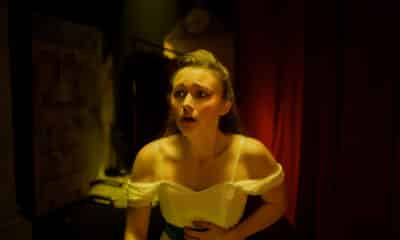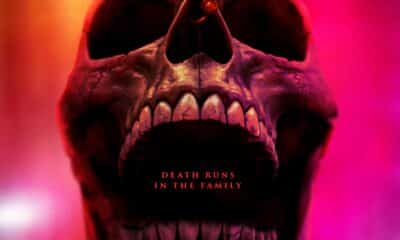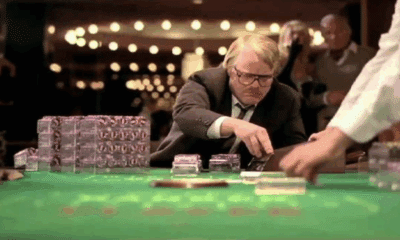Sony and Screen Gems made a very smart move in nabbing the director of the unforgettable Oscar-winning biopic BOYS DON’T CRY for their contemporary retelling of Stephen King’s iconic novel CARRIE. Few filmmakers have captured the torment of wanting acceptance in this world, while at the same time being labelled an outcast better than Kimberly Peirce. The harrowing and heartbreaking performance she got out of Hilary Swank for the role of Brandon Teena made her an ideal choice for the modernised update of the tortured teenager Carrie White.
With the horror remake heading to the UK from Friday, THN had a chance to put some questions to Peirce regarding the taking on of King’s acclaimed story, previously adapted by Brian De Palma.
Could you tell us how you became involved with the project and what made you decide to take it on?
The studio came to me and asked if I wanted to do a version of Stephen King’s CARRIE. I wanted to explore what that would look like in a modern era. What I did was to look back at the novel a number of times and just fell deeply in love with Carrie White and the relationship with her mother. She was extraordinarily written. She was a social outcast and a misfit that faced extraordinary obstacles to get her needs met while she was bullied by the girls and her Mom. She was repressed be her mother, who had created her own religion, and was terrified of the world and terrified of Carrie. I just thought that dynamic between Carrie and these women at school, her mother at home, was just extraordinarily interesting. I really love that she finds out that she has these superpowers and that becomes her salvation, that she explores it and naively goes to prom with the most handsome boy at school. I loved it as a Cinderella story, I loved it as a superhero origin story. I loved that it was just a great, great complicated yet brutal mother-and-daughter story and loved that it was modernisable. There was an opportunity to give these girls cell phones and have them record themselves torturing Carrie. That they would record their celebrating it and it would end up online, and it would go on to have a life of its own and cause more damage to Carrie. I just thought it was an utterly modernisable story and I fell in love with it and said to the studio “I’d like do it” but I definitely wanted to change it to reflect these ideas. When I rewrote it, that was the kind of stuff I worked on. I added a new scene in the beginning with Carrie and her mother that I felt very passionately about because I think it gets at the heart of a mother who loves her daughter deeply but went so far to beat herself and her daughter to protect her. I also love that they have a fight to the death in the movie!
So that contemporary element always the direction you wanted to take from the outset?
Yes, it had to. I don’t think you could have gone back and done a dated version of it. For me it was the more modern the better, but the thing about modernising things is that you want to keep the universe validity and the classiness of King’s story, setting it still in the King world.
Given Brian De Palma’s previous adaptation and King’s novel, were they certain scenes you wanted to leave out or include from both?
Well, King’s novel was always the Bible for me. Everything in King’s novel I looked at through a lens of ‘What is the absolute best way to adapt this’, what scenes in here best tell the story and move it forward and what scenes don’t I need. But that’s any adaptation. You always have to cut out a lot of stuff in order to get at the essence of what the material wants. De Palma’s version was never a reference point for me. I love De Palma’s movie, I appreciate it and I’m friends with him but what I was focusing on was Stephen King and how best to serve him and that’s something I’m always doing as a writer/director. How best to serve the source material.
Sissy Spacek was 28 when she shot her film; were there any challenges in casting an actress closer to the character’s actual age given the harsh subject matter?
Chloe is the actual age of the girl in the book. That didn’t present any problems and if anything, again independent of anything else, Chloe was a very charismatic young actress who happened to be the age of the person in the book. Because this is such a relevant and timely issue, you know, it’s happening in our schools and the tough relationship between the mother and daughter. Having Chloe be 15 years-old going on 16, in honesty, it really did help us. It solidified the mother and daughter relationship and was easier for Julianne to play the mother of this girl. In many ways, an older actress can do anything and they’re great, but in a younger actress as in Chloe, it might have been more challenging for Julianne to come off as that person’s Mom. It made it work kind of more naturally. Chloe being the age that she was kinda helped the other kids seem older, cooler and more sophisticated. It really helped when they were kind of bullying her and giving her a hard time. I think they had the edge because they were that little bit older so I really think Chloe’s age worked to our advantage even if only in terms of bringing Stephen King’s story.
Were both Chloe and Julianne your first choice for their respective roles?
They were definitely my first choice which was great, but for Julianne there really was no other choice. She is just a great actress. She’s warm. She’s beautiful. Intelligent. She can ground the mother. She is a mother. There really was nobody else to consider. With Carrie, I think we did our due diligence and went around the country and interviewed about 100 girls and thought about it. I’m lucky as Avi Kaufman’s my casting director for this movie and we got to draw from talent around the world because of social media. I was looking from tapes of girls from Germany, from Australia, from England and there is so much talent out there. In many ways it was a worldwide search to find Carrie and that in itself was thrilling for me. I got to look at this whole new generation of talent. So, yes. Certainly Chloe and Julianne were my first choice but there was a lot of wonderfully talented people.
Given your more dramatic and reality grounded filmmaking background, how was it immersing yourself in the world of CGI effects?
Thrilling! As a writer/director I like writing in the digital realm. So what happens is if I can do it practically I genuinely do because I love the way practical effects look and feel but sometimes I go digital, as many of us do, simply because we have to. So for instance, when Carrie has to stop Chris and Billy from getting away, she doesn’t have a gun. She can’t fly. She doesn’t have magic. What she has the ability to do is move her body and affect the world around her. She stamps her foot and creates a vigour in the ground and that vigour races under the car, opening a gash in the Earth, then the car has to turn around and come toward Carrie. You couldn’t do that practically, as it’s not possible. There is no way that I know you could have actors in a car as this vigour is running through the Earth like an earthquake and that’s exciting and I say, it’s not that I’m abandoning practical effects, I’m creating something that couldn’t have been created before. So that was a very exciting visual effect to do. Stones raining down on the house and raining down on the actors, you can’t do it practically. You can do some stones but you can’t do the totality of the effects. So again, I wrote for the digital world. When visual effects are used well, it’s another opportunity for a deeper and richer storytelling.
Did you feel the similar “outcast” link to your previous fact-based film BOYS DON’T CRY helped aide CARRIE, even if it has more of a fantastic element?
These are characters that I love deeply and I certainly see a connection to BOYS DON’T CRY, CARRIE and my other movie STOP LOSS. They’re all about people who are deeply outcast, deeply social misfits who we love. They desperately want to be part of the human race. They wan’t to fit in. They want to be accepted like we all do and they’re so desperate for it, they’re willing to go to extreme measures in order to be a part of what most of us take for granted. That makes me love them more and I think that all makes us identify with them when they come into conflict with people that don’t want to give them that space. That’s wonderful. John Lotter versus Brandon Teena. Chris versus Carrie. Even Margaret versus Carrie. Both Chris and the mother are the antagonists in this story and don’t want Carrie to fit in, be normal and have a life that she wants. It’s great, great conflict.
Given the way the film ends, would you consider returning for a follow-up?
I don’t know that there is a follow-up. Then again, I would not rule out another chapter. I do think that there is great and wonderful closure in the film we had. I’m not quite sure what the next chapter would be but you know, I love Carrie and if she could live on in someway, I’m not against it but I don’t see what that is right now.
Was it true that you filmed multiple endings for CARRIE?
It’s definitely true when making a movie you film all kinds of stuff and we did our very best to make the best ending possible. So, yeah we looked at every possible option to end this correctly.
Finally, can you give us any details of what we can look forward to seeing you working on in the future?
Well, I’m writing a really wonderful cyborg story inspired by the singularities in the ear. Creating a human mind and where we’re going in reality in the augmentation of the human body with new body parts. There is a character that that happens to and we’ll see if we can get that made. I’m going to direct a television pilot in January and I’m just really excited to be directing again as soon as possible.
CARRIE is released in UK cinemas from the 29th November and stars Chloe Grace Moretz, Judy Greer, Portia Doubleday, Alex Russell, Gabriella Wilde, Ansel Elgort and Julianne Moore.
Craig was our great north east correspondent, proving that it’s so ‘grim up north’ that losing yourself in a world of film is a foregone prerequisite. He has been studying the best (and often worst) of both classic and modern cinema at the University of Life for as long as he can remember. Craig’s favorite films include THE SHAWSHANK REDEMPTION, JFK, GOODFELLAS, SCARFACE, and most of John Carpenter’s early work, particularly THE THING and HALLOWEEN.

Latest Posts
-


Film Reviews
/ 3 days ago‘Fear Street: Prom Queen’ review: Dir. Matt Palmer (2025)
It has been four years since Leigh Janiak’s Fear Street trilogy took horror fans...
By Kat Hughes -


Film Reviews
/ 3 days ago‘The Surrender’ review: Dir. Julia Max (2025)
As Julia Max’s debut feature, The Surrender, unfolds, the inspirations for the film become...
By Kat Hughes -


Film Trailers
/ 4 days agoFirst trailer for Darren Aronofsky’s ‘Caught Stealing’
Sony Pictures has released the debut trailer for Darren Aronofsky’s new film Caught Stealing,...
By Paul Heath -


Film Reviews
/ 5 days ago‘Lilo and Stitch’ review: Dir. Dean Fleischer Camp (2025)
Director Dean Fleischer Camp won audiences over with the fantastic Marcel the Shell with...
By Kat Hughes





